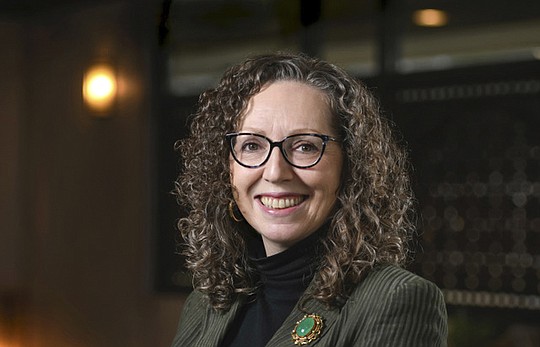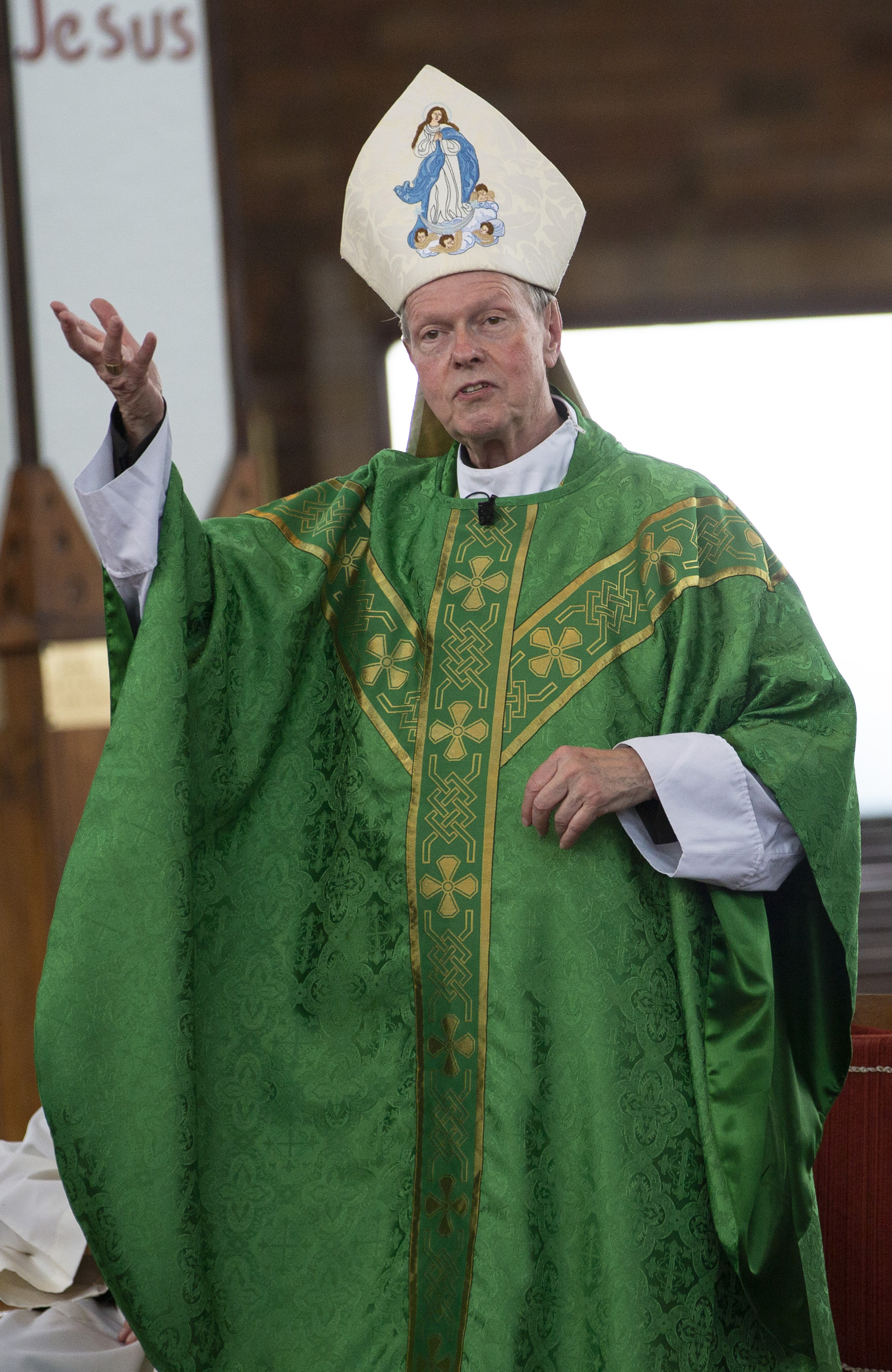November 26, 2024 at 9:30 a.m.
Waiting without hope
When I was approaching my 60th birthday a couple of years ago, I decided to have two words from my favorite psalm tattooed on my left arm. “Be still,” it says, with the image of a lotus blossom emerging from it. The gorgeous lotus blossoms that sit atop lily ponds must push up through thick mud before emerging into the light and opening to the world. The imprint on my arm is a visible reminder of the spiritual journey I am on, and as I continue to age and expand and grow, I find it’s a journey many people my age — in particular women — are embracing with a kind of curiosity and tentative joy that is downright inspiring.
It’s not always easy to remain curious and joyful when the body is slowing down or maybe even breaking down, when the world around us is full of suffering and uncertainty and downright madness. But if we are willing to approach all that is before us as a lesson to be learned, not in a punitive way but in a heart-opening way, we find a path that is not necessarily easy but calls us forward just the same. It is an approach that reminds me of a T.S. Eliot poem I often use when leading retreats.
In “East Coker,” part of Eliot’s “Four Quartets,” the poet writes:
“I said to my soul, be still, and let the dark come upon you/Which shall be the darkness of God…I said to my soul, be still and wait without hope/For hope would be hope for the wrong thing; wait without love/For love would be love of the wrong thing; this is yet faith/But the faith and the love and the hope are all in the waiting. Wait without thought, for you are not ready for thought: So the darkness shall be the light and the stillness the dancing.”
On the surface, this poem might feel depressing, but on closer inspection these words show us a way to rise up through the mud of this world to the Light that draws us up and out and forward no matter who we are or what we’re facing. To “wait without hope” is not despair, just the opposite. It is to know that when we show up in prayer filled with hope, it is often a hope of our own creation, to suit our own agenda, and achieve a certain outcome. We will be hopeful if all the external criteria are met. When we wait without hope, however, we are fully present before God, allowing God to be God rather than trying to take on that role ourselves, which is what humanity has been trying to do ever since Eve was blamed for the fall.
Our entire spiritual journey is, in a sense, an effort to “get ourselves back to the garden,” as singer/songwriter Joni Mitchell wrote so many years ago. Often, we attempt to do that by trying to force our way through rather than letting the way appear before us according to God’s plans. Especially during difficult times, whether in our personal lives or in the larger world, it can be near-impossible to trust that God has a plan greater than ours and that, in the end, this world is temporary. Our faith gives us the practice of “memento mori,” which means: “Remember you must die.” It’s not meant to be scary or ghoulish, even if it is often accompanied by the image of a skull. It’s meant to ground us in our spiritual reality when this world tries to convince us that what we see in front of us is all that matters.
It seems fitting as we move through the steely gray of late fall, with its chill and encroaching darkness, to wonder how we will ever again find the light to lead us home. As we journey toward Advent, we know from years past that there is a well-worn spiritual path for us to follow, one of expectant waiting, where the light grows day by day, week by week and, with it, our hope.
Mary DeTurris Poust is a writer, retreat leader and spiritual director. She will be leading a free online Advent mini retreat on Friday, Dec. 6, at 2 p.m. For more information, visit NotStrictlySpiritual.com/events.
MORE NEWS STORIES
- Interview with French Archbishop Verny, new president of the Pontifical Commission for the Protection of Minors
- San Antonio archdiocese calls for prayers as at least 20 girls missing from Christian camp following severe flooding
- Catholic novel reflects on the nature of work
- President Trump signs ‘Big Beautiful Bill’ into law July 4
- Wisconsin abortion ban, Big Beautiful Bill, care for creation Mass | Week in Review
- Washington Roundup: Trump bill passes; USAID closes; concerns rise over Russia religious persecution
- Jurassic World Rebirth
- F1 the Movie
- ‘Help us escape, we can’t live here,’ pleads Damascus priest after deadly attack
- A year later, first ‘perpetual pilgrims’ describe how Eucharistic pilgrimage changed their lives











Comments:
You must login to comment.